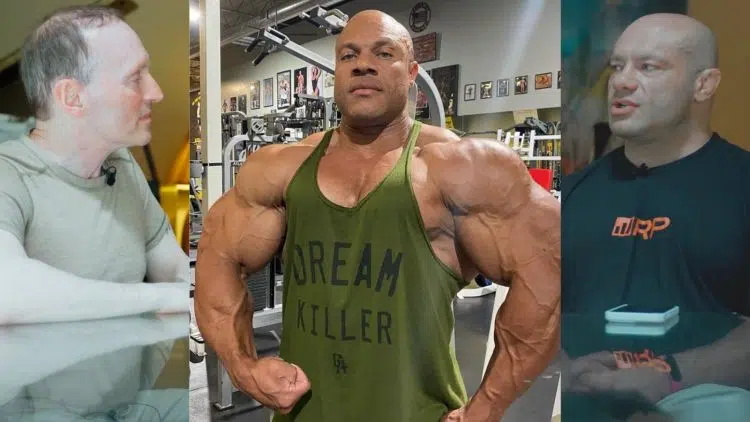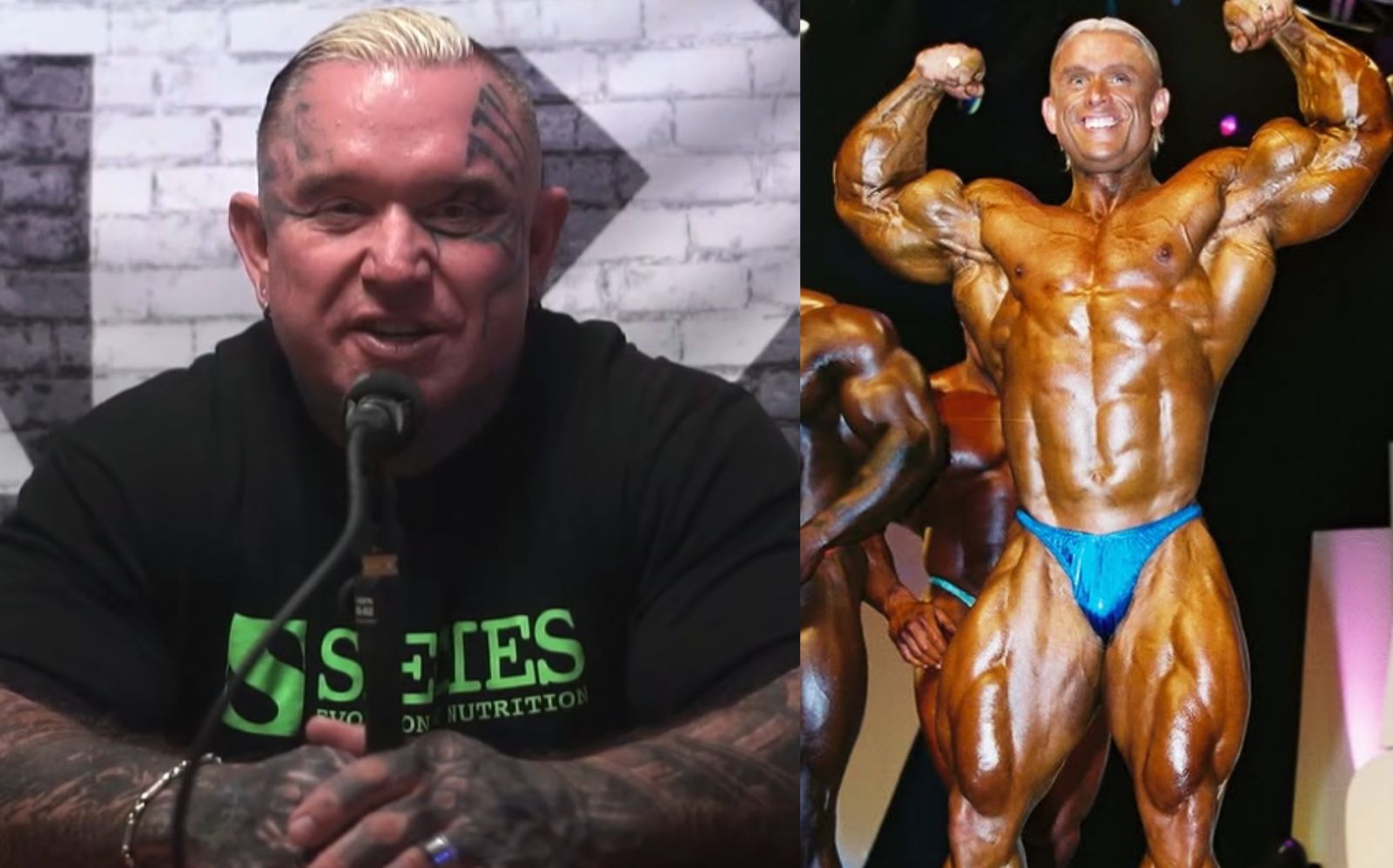Fitness educator Dr. Brad Schoenfeld and exercise scientist Dr. Mike Israetel joined hands for an enlightening discussion on muscle building. In their latest undertaking on YouTube published July 31, 2024, ‘The Hypertrophy Specialist’ and Dr. Israetel broke down if you can change the shape of your muscles and craft bigger bicep peaks with effective training.
With decades of experience teaching exercise mechanics and strategies for enhancing body composition, Dr. Schoenfeld is revered in the fitness community for his thorough and easy-to-understand information on training outcomes.
Having collaborated with other high-profile voices in the industry like Dr. Rhonda Patrick, Dr. Peter Attia, and Dr. Mike Israetel, he continues to offer free-to-consumer content that can be applied by individuals of varying fitness levels. In his latest venture, he unpacked whether or not it’s possible to manipulate the shape of muscles by inducing hypertrophy.
‘Hypertrophy Specialist’ Brad Schoenfeld & Dr. Mike Israetel Reveal If You Can Reshape Muscles and Create Bigger Bicep Peaks With Training
To begin, Dr. Israetel and Dr. Schoenfeld examine regional hypertrophy and how it can affect different muscle groups.
Level Up Your Fitness: Join our 💪 strong community in Fitness Volt Newsletter. Get daily inspiration, expert-backed workouts, nutrition tips, the latest in strength sports, and the support you need to reach your goals. Subscribe for free!
“First, what the hell is regional hypertrophy before you tell us if it really happens or to what extent? What is it?” asks Dr. Israetel.
“It can really be one of two things. It can either be the hypertrophy between different heads of a given muscle, so like your shoulders, the anterior, middle, and posterior head.
The quadriceps you have the rectus femoris, vastus lateralis, so it could be differential effects between the muscles themselves or and this is to me, really interesting because it goes against what I was taught when I was first coming up, it can be differences along the length of a given muscle.”
Dr. Israetel asks if muscles can be reshaped visually with training, such as making the bicep muscle appear longer than it was.
Is it safe to say, look, no it won’t radically change the shape of your muscle as seen from an external perspective, like an Instagram photo, but subtly, it can change it in such a way that the overall visual picture, like ‘Damn, dude, your biceps do look a little bit kinda fucking longer.’ Not like you turned into Ronnie Coleman from having total flat biceps, but something that over time can definitely have a qualitative impact on physique. Are you comfortable hypothesizing that?”
According to Dr. Schoenfeld, ‘You can’t change the inherent quote-unquote shape of the muscle.’
“I think we need to be careful at least to clarify when we talk about changing the shape of the muscle, there’s several connotations to that.
We can have the bro science do concentration curls that work the peak of your bicep that somehow you’re going to make a flat bicep into a mountainous bicep, you can’t change the inherent quote-unquote shape of a muscle.”
Although building the bicep muscle is well within arm’s reach (no pun intended), he says there aren’t exercises you can perform to ‘peak it.’
“You can’t do an exercise that will peak it. Arnold Schwarzenegger had that — it wasn’t the training that he did that gave him that peak, that was his bicep, that was his genetics. But, you can change the shape of your body if you will by getting more hypertrophy in certain aspects as opposed to others.”
However, he does acknowledge that individuals can target the ‘distal aspect of the muscle’ and attempt to lengthen it with concentric and eccentric overload training.
“I think that certainly is a reasonable and rational way going about saying it. I would also point out that when we’re talking about this type of thing, if you’re going to do, let’s say from a practical standpoint, if you’re going to do a program that involves just concentric actions, you may benefit let’s say from having some eccentric overload training involved to target quote-unquote target the distal aspect of the muscle,” said Dr. Schoenfeld.
Dr. Schoenfeld used calf raises as an example, specifying that you can work the lateral aspect of the gastrocnemius while turning your toes inward. Conversely, the medial aspect of the gastrocnemius can be trained by pointing the toes outward.
“There is some evidence — it’s limited but certainly one study in particular, did show that with calf raises, I know you don’t care about the calves, you have jacked calves already, but turning your toes in tends to work the lateral aspect of the gastrocnemius while turning your toes out tends to work the medial aspect.”
We all want bigger bicep peaks, and fortunately, there are ways to stimulate ‘regional hypertrophy’ which could help build different heads of a given muscle. However, Dr. Brad Schoenfeld emphasizes that impressive bicep peaks are largely determined by genetics rather than exterior influences like training.
RELATED: Long Bicep vs. Short Bicep: Everything You Need To Know









